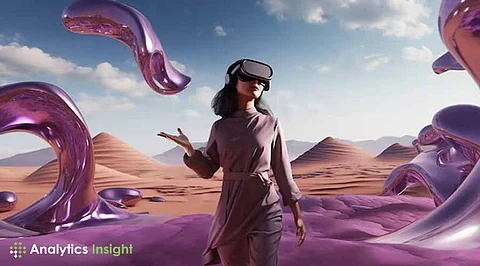

Microsoft presents its generative AI model Muse, which brings revolutionary changes to the video game development process. Museums can produce visual aspects for games and forecast how players interact with them, providing an innovative method for producing and conserving games. This development emerged through Microsoft Research teaming up with Ninja Theory to create tools that enhance production speed and future potential for iconic video games.
Muse is an abbreviation that combines World and Human Action models. The artificial intelligence platform replicates game spaces alongside players' actions. Microsoft Muse AI trains using data from Ninja Theory's game Bleeding Edge to deliver reliable gameplay sequences. The technology behaves according to game physics and interacts with 3D spaces to create illustrations and predict how players will move. Developers can easily debug ideas through this functionality while discovering fresh gaming concepts.
Muse demonstrates its most remarkable characteristic through its ability to preserve video games. Existing gameplay data enables Muse to reproduce classic games that become playable on contemporary platforms. Muse enables developers to return vintage games through automatic restoration without requiring the complete rewrite of their original programs. Microsoft corporate vice president for Gaming AI Fatima Kardar showed great enthusiasm about such potential as she envisions old favorite games being playable across all devices.
Through its interface, Muse functions as a helper for developers to create games by cutting down repetitive tasks but not taking over creative responsibilities. Muse enables developers to dedicate more time to design and innovation work through its repetition management features. Muse can create foundational game landscapes and moveable character behaviors through its capabilities, which programmers can expand into completed products. The application method shortens development schedules while decreasing financial burdens from increasing production costs and economic insecurity.
Game developers demonstrate diverse reactions to the introduction of Muse in the industry. While the potential benefits of improved design and efficiency are supported, organizational members also fear it will diminish artistic quality and potentially endanger employment positions. During a discussion with The Outline's David Goldfarb, founder of The Outsiders studio, he expressed robust disapproval of generative AI's devaluing of artisans' work.
Right now, Muse makes pictures in low quality (300×180 pixels). This is not good for modern games. But the technology has a lot of promise. AI is improving fast. In the future, Muse will take better pictures and do more things. Microsoft will keep working on Muse. They want to use it to make and save games.
Microsoft's Muse AI is a big step in using AI for games. It helps make game pictures and guess what players will do. Muse can make game creation easier and faster. It can also help save old games. There are still some problems, but the future looks bright for AI in gaming.
